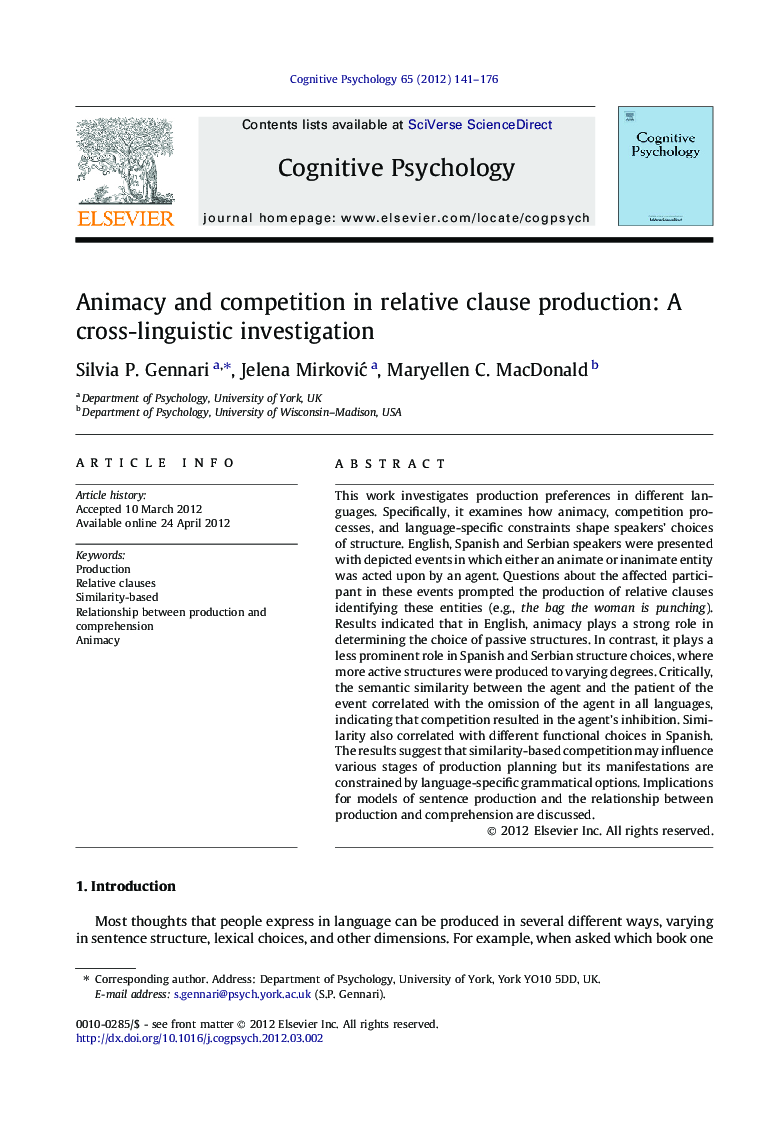| Article ID | Journal | Published Year | Pages | File Type |
|---|---|---|---|---|
| 916939 | Cognitive Psychology | 2012 | 36 Pages |
This work investigates production preferences in different languages. Specifically, it examines how animacy, competition processes, and language-specific constraints shape speakers’ choices of structure. English, Spanish and Serbian speakers were presented with depicted events in which either an animate or inanimate entity was acted upon by an agent. Questions about the affected participant in these events prompted the production of relative clauses identifying these entities (e.g., the bag the woman is punching). Results indicated that in English, animacy plays a strong role in determining the choice of passive structures. In contrast, it plays a less prominent role in Spanish and Serbian structure choices, where more active structures were produced to varying degrees. Critically, the semantic similarity between the agent and the patient of the event correlated with the omission of the agent in all languages, indicating that competition resulted in the agent’s inhibition. Similarity also correlated with different functional choices in Spanish. The results suggest that similarity-based competition may influence various stages of production planning but its manifestations are constrained by language-specific grammatical options. Implications for models of sentence production and the relationship between production and comprehension are discussed.
► We examine how animacy, competition and language-specific constraints shape production. ► Descriptions of entities in three languages show variability in structural preferences. ► Production preferences depend on animacy and similarity between the described entities. ► Similarity-based competition influences various stages of production processes.
